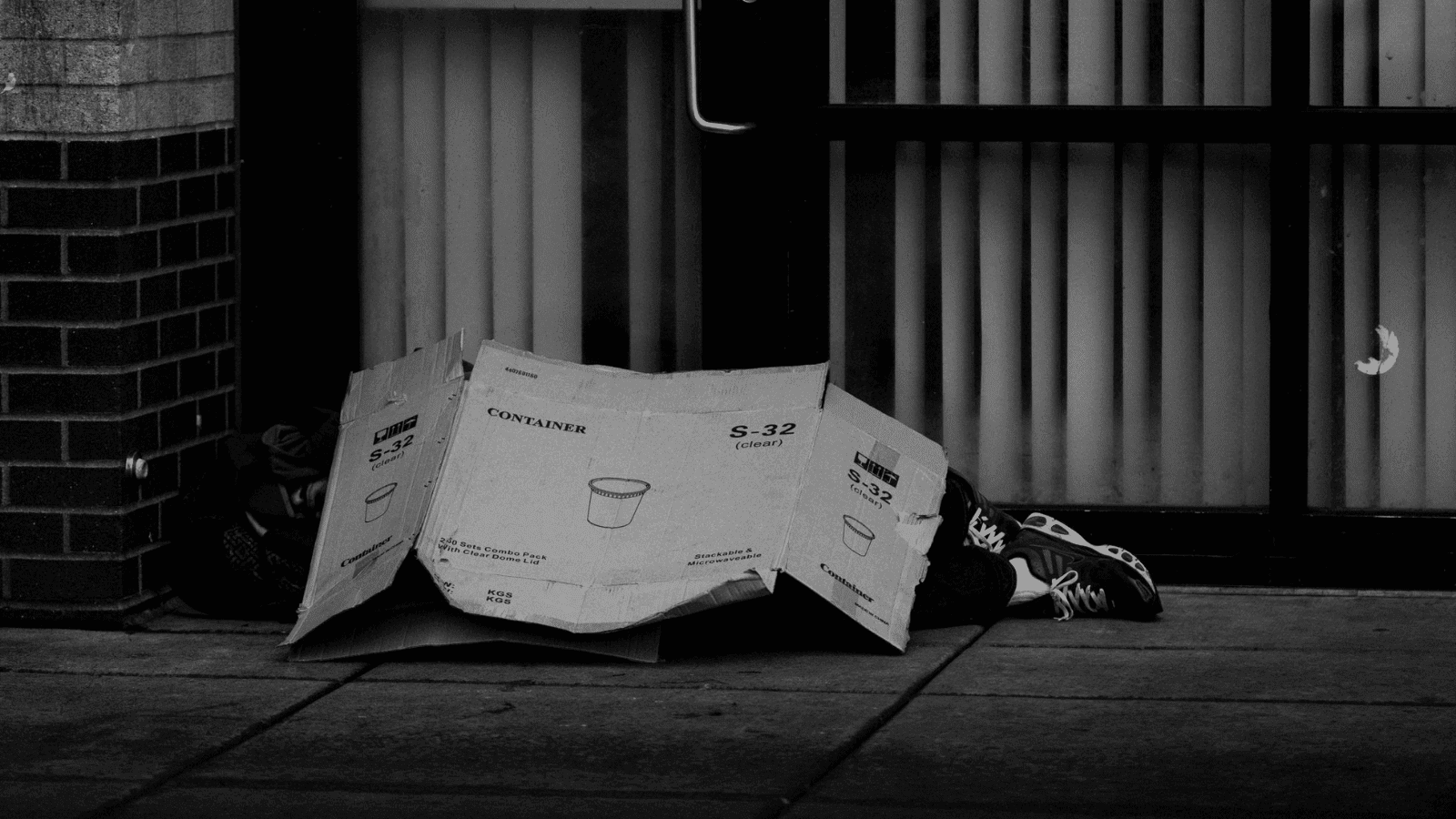After noticing all the unsheltered people living on France’s streets, a clever engineer designed ‘igloo’ shelters for them. Those without a stable living situation struggle to survive all year, but especially in the colder months. Even with blankets and sleeping bags, many homeless people find it hard to stay warm in the winter. They don’t have the luxury of heaters and warm beds, and in freezing temperatures, homelessness can result in life-threatening situations.
French engineer Geoffroy de Reynal realized the dangers of being unsheltered when he returned to France. His job as a quality manager of wind turbine construction sites had taken him abroad to Montenegro. While there, he noticed the relatively small homeless population, in contrast to France’s. When he returned to his home country, he wanted to help homeless people stay warm.
After doing some brainstorming, he came up with the Iglou, a mobile shelter that resembles igloos. Homeless people can take shelter in during the freezing winter months, a welcome respite from the harsh elements.
De Reynal designed the igloos using polyethylene foam, which retains body heat very well. He also covered the outside in aluminum foil to further insulate the structures and make them fire-resistant. Furthermore, the igloos are waterproof so that anyone inside will stay warm and dry. He says the temperatures inside remain about 60 degrees Fahrenheit warmer than outside.
The lightweight shelter only takes about five seconds to assemble and doesn’t have any loose parts. It also folds easily, making it convenient to move to a new spot. Not to mention, the igloos help increase capacity at homeless shelters. Those sleeping in the portable shelters can still access the facilities inside the centers, even if the beds reach full capacity.
The Iglou might not be a permanent home, but it’s a life-saving idea that protects from the harshest elements.
How the brilliant idea of Iglous for unsheltered people got started
In 2018, De Reynal created prototypes of the igloos using money from his own pocket. After creating a successful product, he decided to launch an online fundraiser to raise money for more igloos. His crowdfunding efforts reached $20,000, exceeding his expectations by a long shot. He then built 20 igloos using his own money as well as funds from the campaign.
He placed ten of them in Bordeaux and ten others in Paris. One couple living in the outskirts of Paris, Océane and Benjamin, received an igloo shelter in the winter of 2018. They both said they fell asleep much faster at night and found it easier to get up in the morning. Their nights improved greatly with the Iglou, and they both feel safer and secure using the shelter.
According to 2012 research by The French National Institute of Statistics and Economic Studies, around 140,000 homeless people live in France. This is an increase of 50% since 2001. Government officials believe this sharp increase may have resulted from rising rent costs and greater financial strains in general. Also, a growing immigrant population from the Middle East and Africa may explain the rise in homelessness.
Even though the igloos have provided shelter for many homeless people, De Reynal knows they won’t eradicate the problems of unsheltered people. He realizes that emergency services are still vital to address the needs of displaced people. However, he believes his igloos will make life a bit more comfortable for them, giving them warmth on frigid nights.
Laurent Eyzat, president and founder of the organization Actionfroid, decided to buy some of the shelters for her company. Hearing many positive testimonials, she wanted the homeless in her area to benefit from them. Her company also distributes food and clothing for the unsheltered people in the city.
De Reynal’s vision for the future of his company
During the past three winters, homeless people throughout France have reaped the benefits of these mobile shelters. While his invention has proved successful, De Reynal revealed that he had much bigger plans. He wants to produce the igloos on a large scale – perhaps hundreds or thousands of them. The engineer also wants to improve, such as adding wheels for better mobility and building larger structures for families.
He says he hopes French authorities will aid him with his newest project. Also, he wants to expand production to include other countries. He mentioned Poland and the U.S. specifically, saying that cities like Chicago could use these shelters. The winters there are brutal, with lots of snow and cold nights, and the homeless have a hard time staying warm.
Unfortunately, homelessness continues to rise globally due to financial difficulties, mental illnesses, and unemployment, to name a few reasons. Displacement due to family conflicts, substance or alcohol abuse, natural disasters, and government housing policies also contribute to the epidemic. It’s estimated that around 2% of the global population, or 150 million people, live on the streets. However, reports estimate that around 20%, or 1.6 billion people, may not have adequate housing.
The solution to this complex problem will require cooperation from many sectors of society, including governments and state officials. While many policies and reforms have attempted to address the homelessness crisis, the population of unsheltered people keeps rising. Possible solutions may include raising the minimum wage, expanding mental health services, and giving stable housing first to the homeless.
Final thoughts: A concerned engineer found an innovative way to keep unsheltered people warm
So far, Geoffroy de Reynal, an engineer from France, has helped hundreds of homeless people stay warm. He created the Iglou, a lightweight mobile shelter to keep the homeless safe from the cold during the winter months. He hopes to expand production to countries such as Poland and the U.S., where homelessness is rampant. De Reynal knows that the igloos provide only a temporary solution, but he says the shelters at least keep people out of extreme weather conditions.
The Iglou is much warmer than a tent. In fact, one man said he had to take his coat off because it was so toasty! Hopefully, many more unsheltered people throughout the world will benefit from these ingenious shelters until we can find better long-term solutions.















 Community
Community

